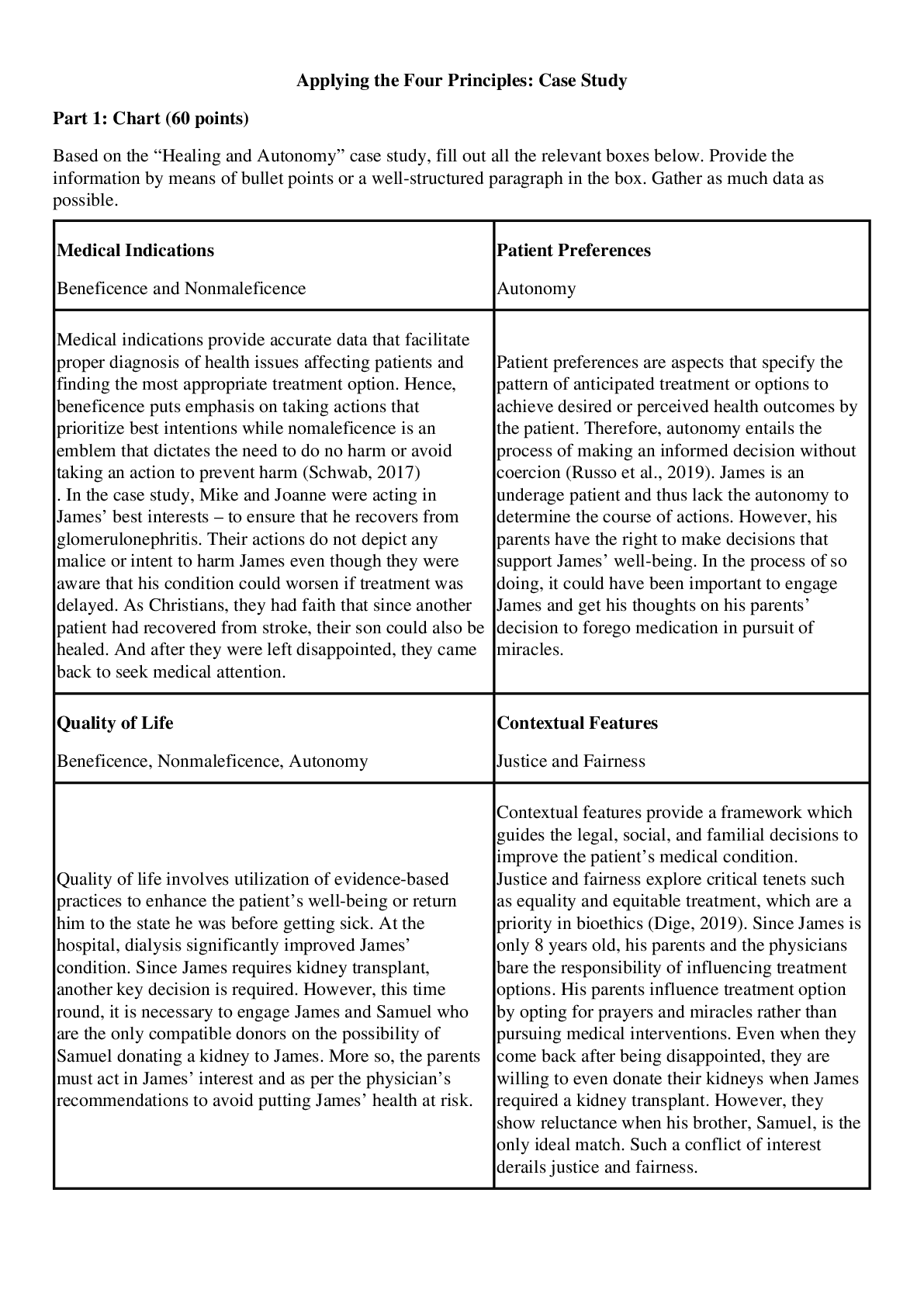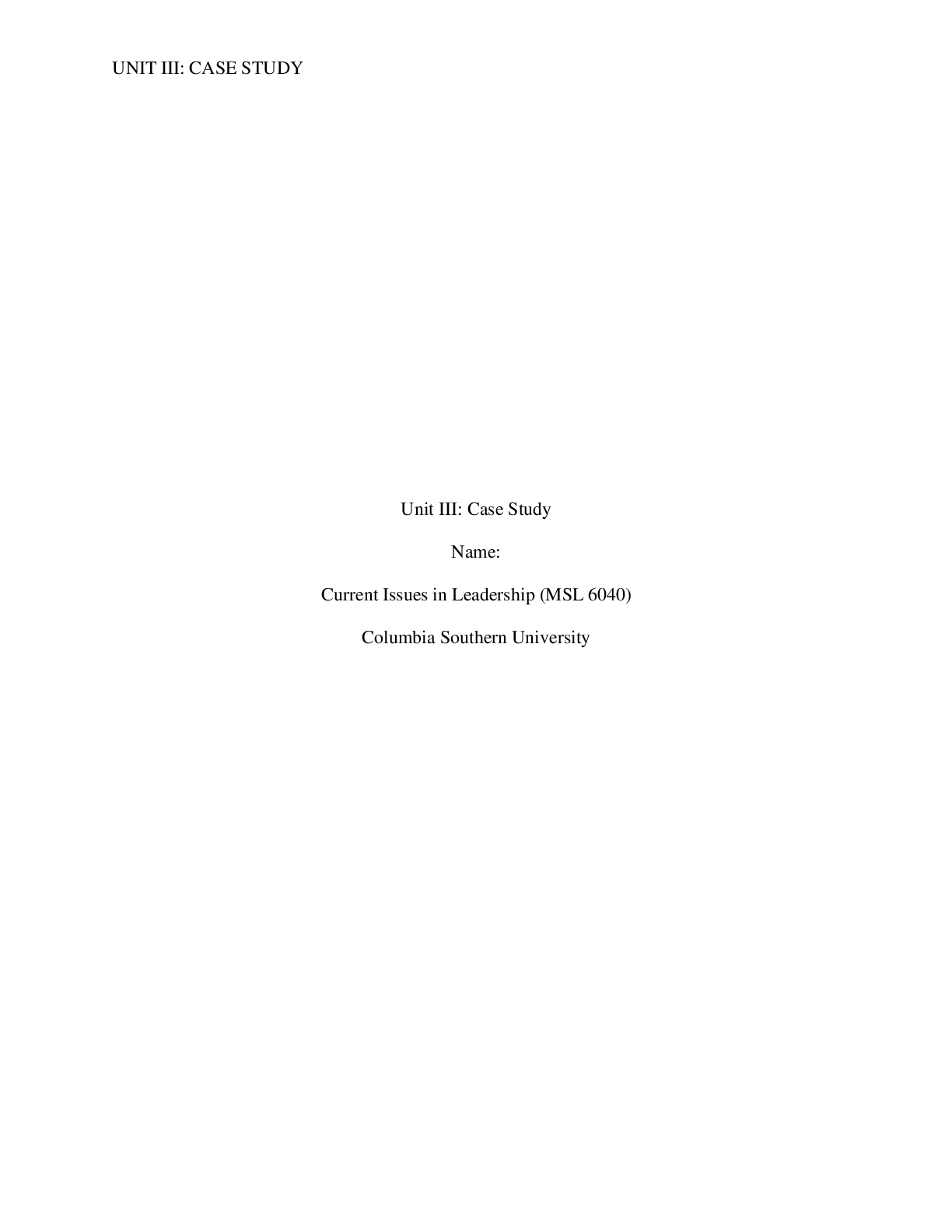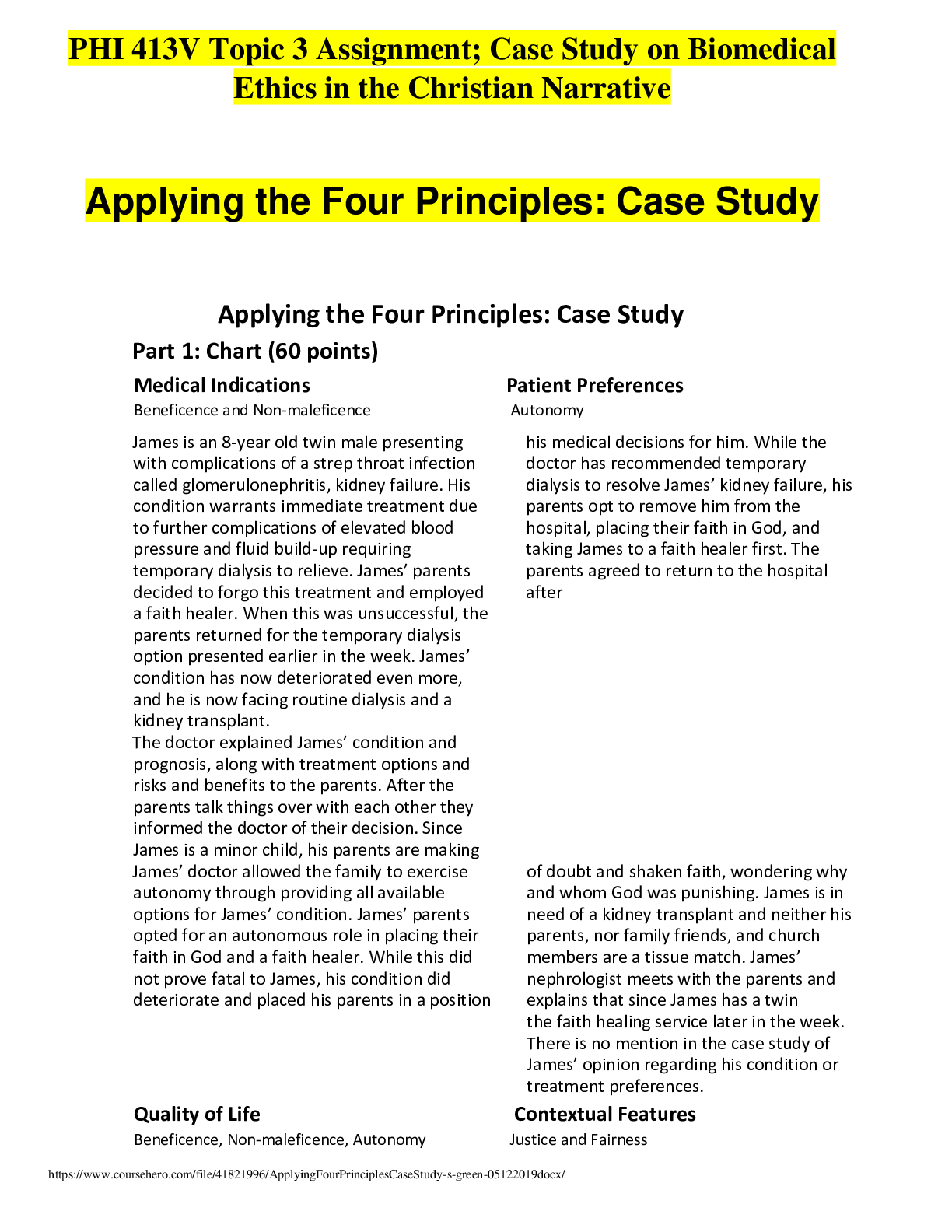*NURSING > CASE STUDY > Post-op Pain Management: Cardiac Arrest : Case study (All)
Post-op Pain Management: Cardiac Arrest : Case study
Document Content and Description Below
UNFOLDING Reasoning Case Study: STUDENT Post-op Pain Management 2/2: Cardiac Arrest History of Present Problem: Sheila Dalton is a 52-year-old woman who has a history of chronic low back pain and C... OPD. She had a posterior spinal fusion of L4-S1 earlier today. Her pain is currently controlled at 2/10 and increases with movement. She was started on a hydromorphone patient-controlled analgesia (PCA) with IV bolus dose that is 0.2 mg and continuous rate of 0.2 mg/hour. The nurse reported that her nausea has improved after receiving ondansetron IV four hours ago. She was having increased pain despite using the PCA every 10 minutes. Her pain has decreased from 6/10 to 2/10 since the PCA bolus was increased from 0.1 mg to 0.2 mg of hydromorphone IV one hour ago. Patient Care Begins: RELEVANT Data from History: Clinical Significance: COPD Chronic low back pain Recent spinal fusion surgery Hydromorphone use with worsened pain Nausea, relieved with Zofran Low SpO2 89% Low BP 92/48 History of respiratory issues, likely retains CO2, potential alveoli dysfunction Use of pain medication with chronic back pain? Post-op day 0, need to assess for surgical complications/expected findings, risk for infection/bleeding Narcotic use (decr. RR) Low oxygenation status on 4L NC Is BP complication of meds, sign of bleeding? Current VS: T: 99.8 F/37.7 C (oral) P: 78 R: 12 BP: 92/48 O2 sat: 89% room air 4 liters n/c Your shift continues... Thirty minutes later she is feeling more nauseated, and you administer ondansetron 4 mg IV push prn. Five minutes later she puts the call light on again. You are not able to respond immediately because you are helping your other patient get on the commode. Little do you know that Sheila is going to depend on your ability to THINK LIKE A NURSE and clinically reason to save her life. When you arrive in her room you observe the following... © 2016 Keith Rischer/www.KeithRN.com What assessment data is RELEVANT and must be recognized as clinically significant by the nurse? RELEVANT Assessment Data: Clinical Significance: Unresponsive Ashen pale Minimal resp. effort Liquid emesis in mouth Weak carotid pulse 24 bpm Does not awake or arouse to painful stimuli signs of cardiac arrest, heart is not pumping blood and shunting to core is likely occurring Loss of consciousness from sudden lack of blood flow Aspiration of gastric contents during arrest could have occurred Needs immediate intervention!!! [Show More]
Last updated: 2 years ago
Preview 1 out of 20 pages

Buy this document to get the full access instantly
Instant Download Access after purchase
Buy NowInstant download
We Accept:

Reviews( 0 )
$14.00
Can't find what you want? Try our AI powered Search
Document information
Connected school, study & course
About the document
Uploaded On
May 18, 2021
Number of pages
20
Written in
Additional information
This document has been written for:
Uploaded
May 18, 2021
Downloads
0
Views
325


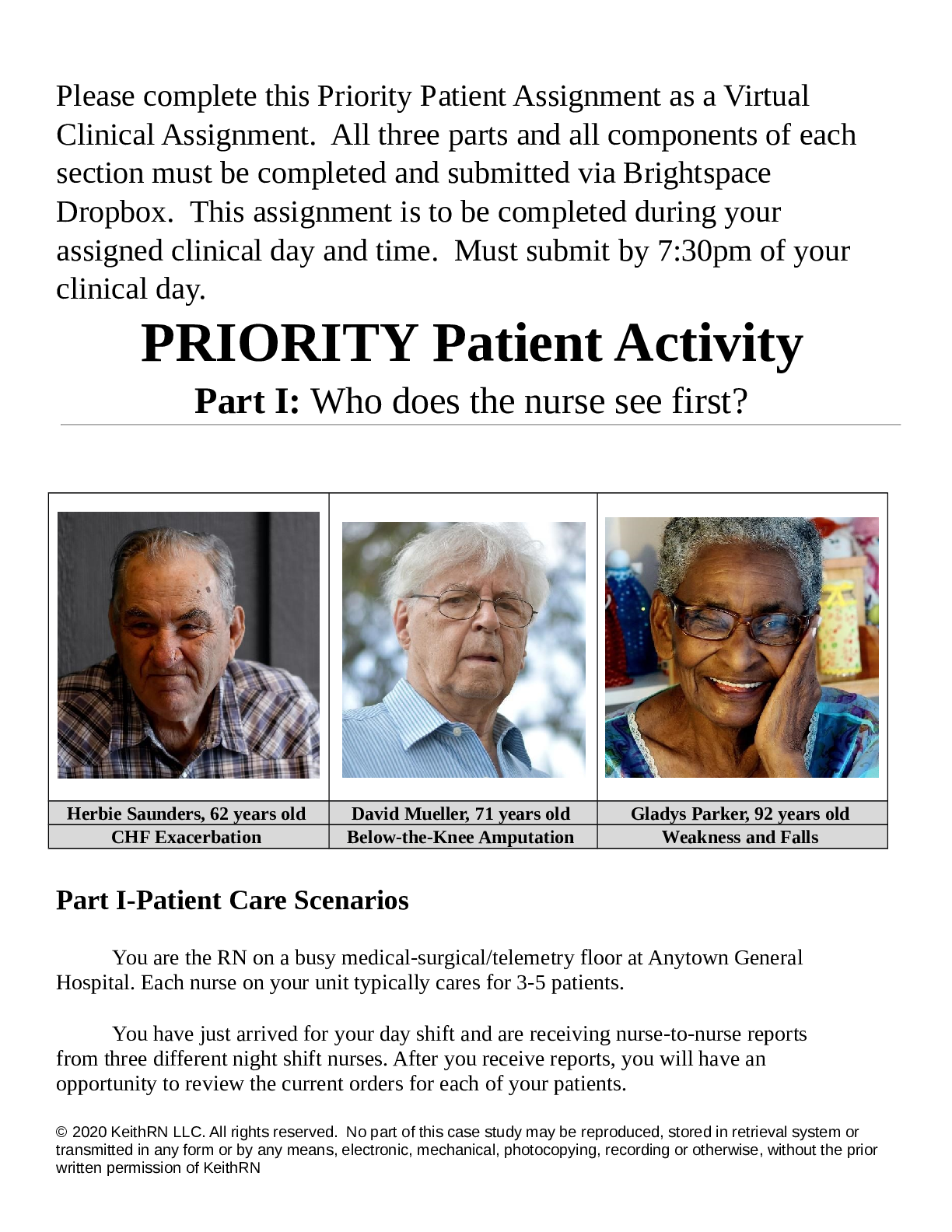

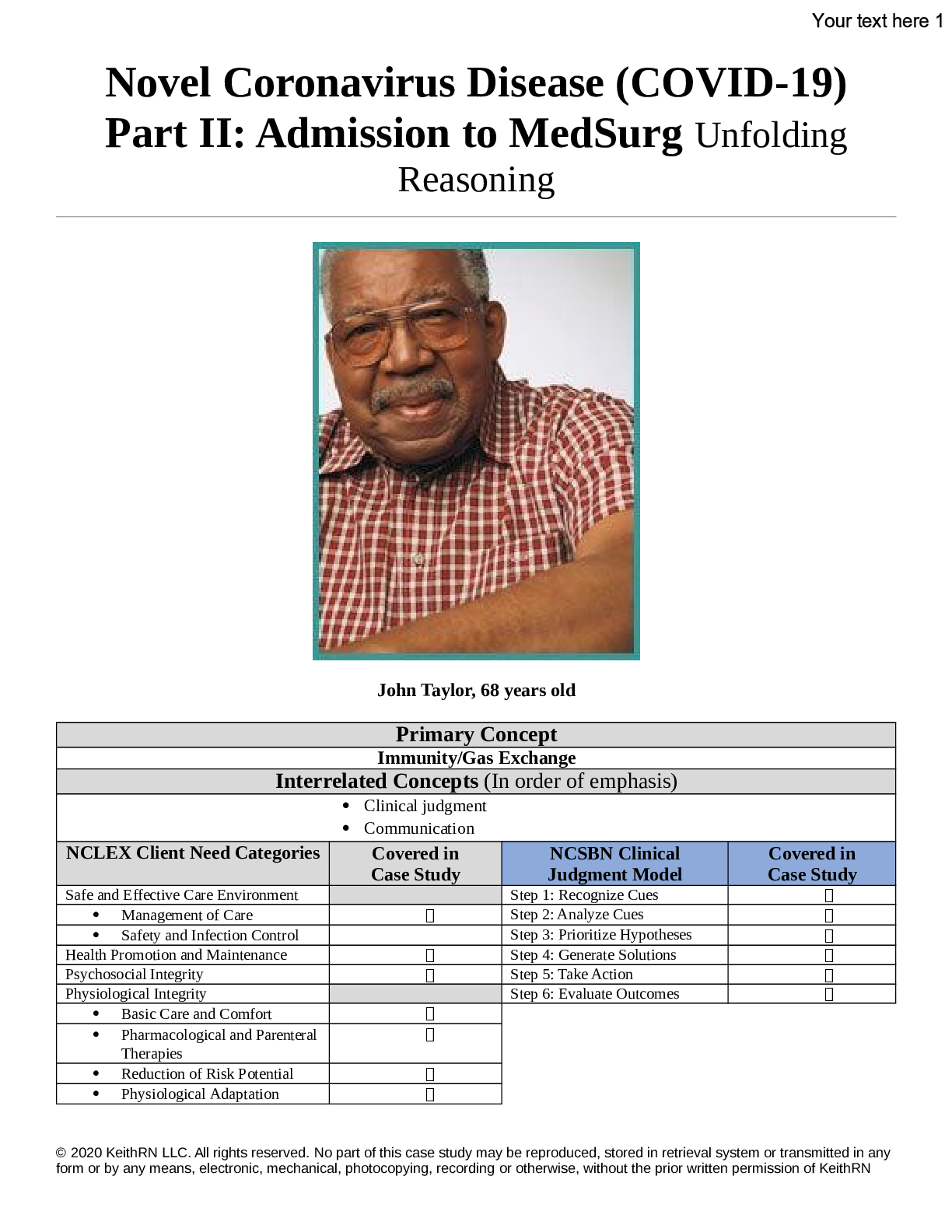

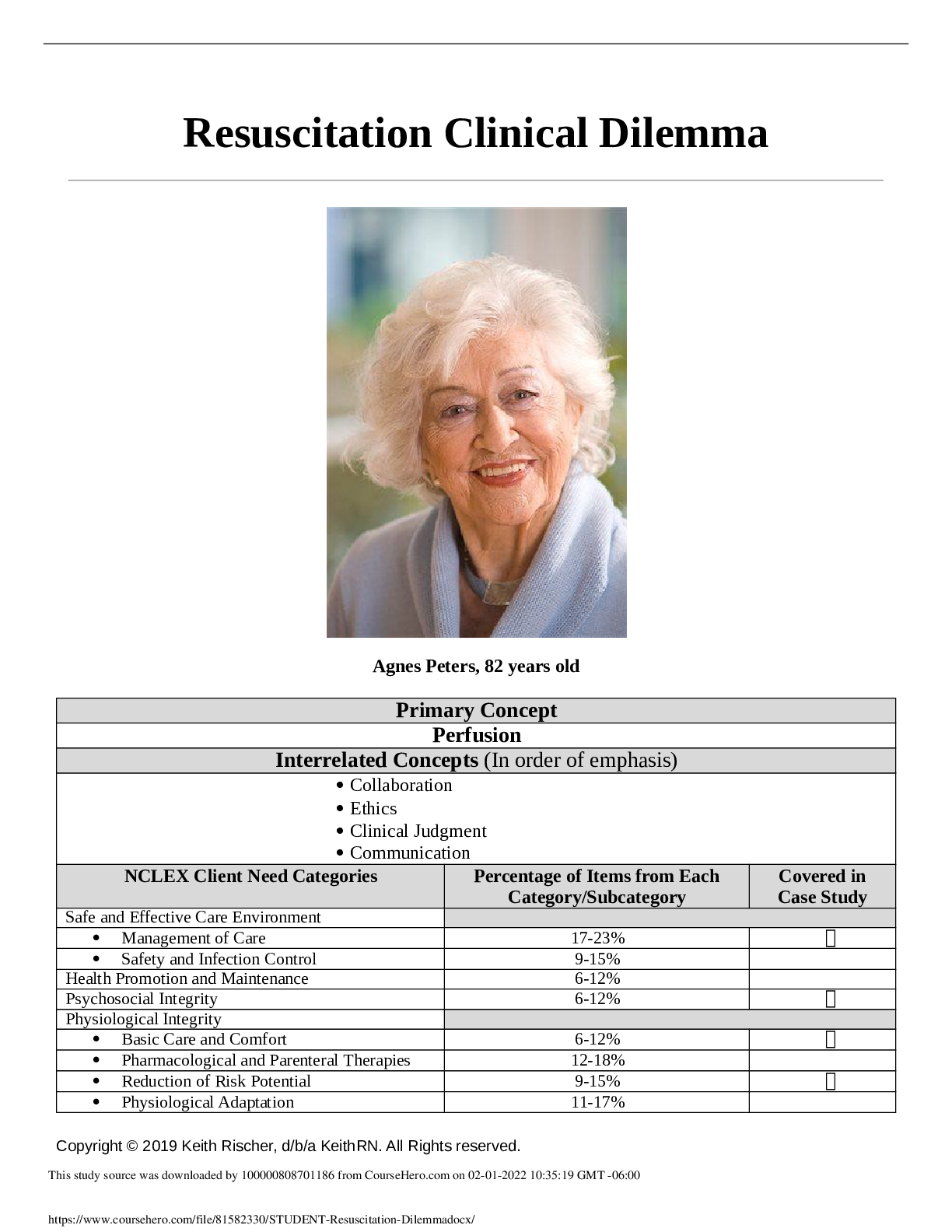











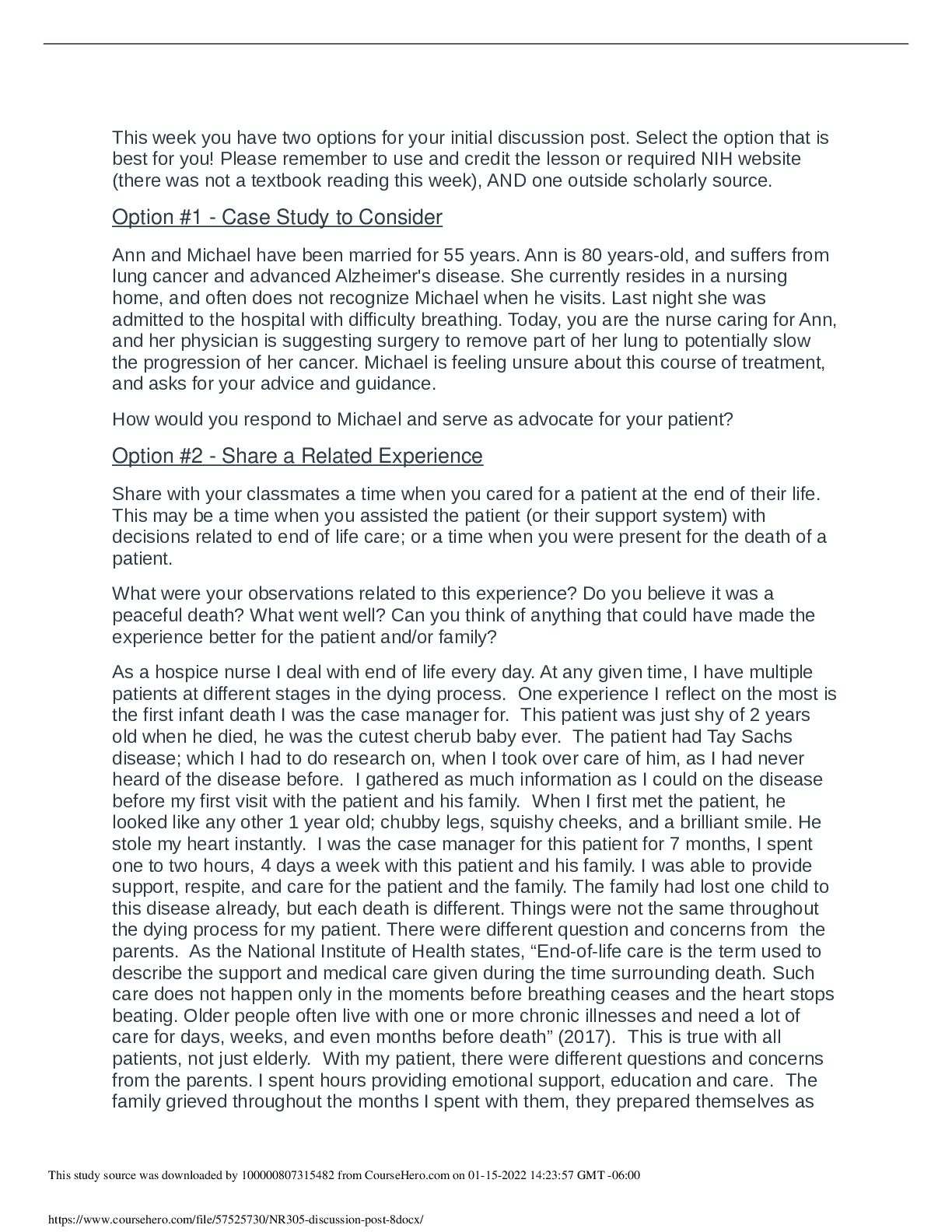

.png)
